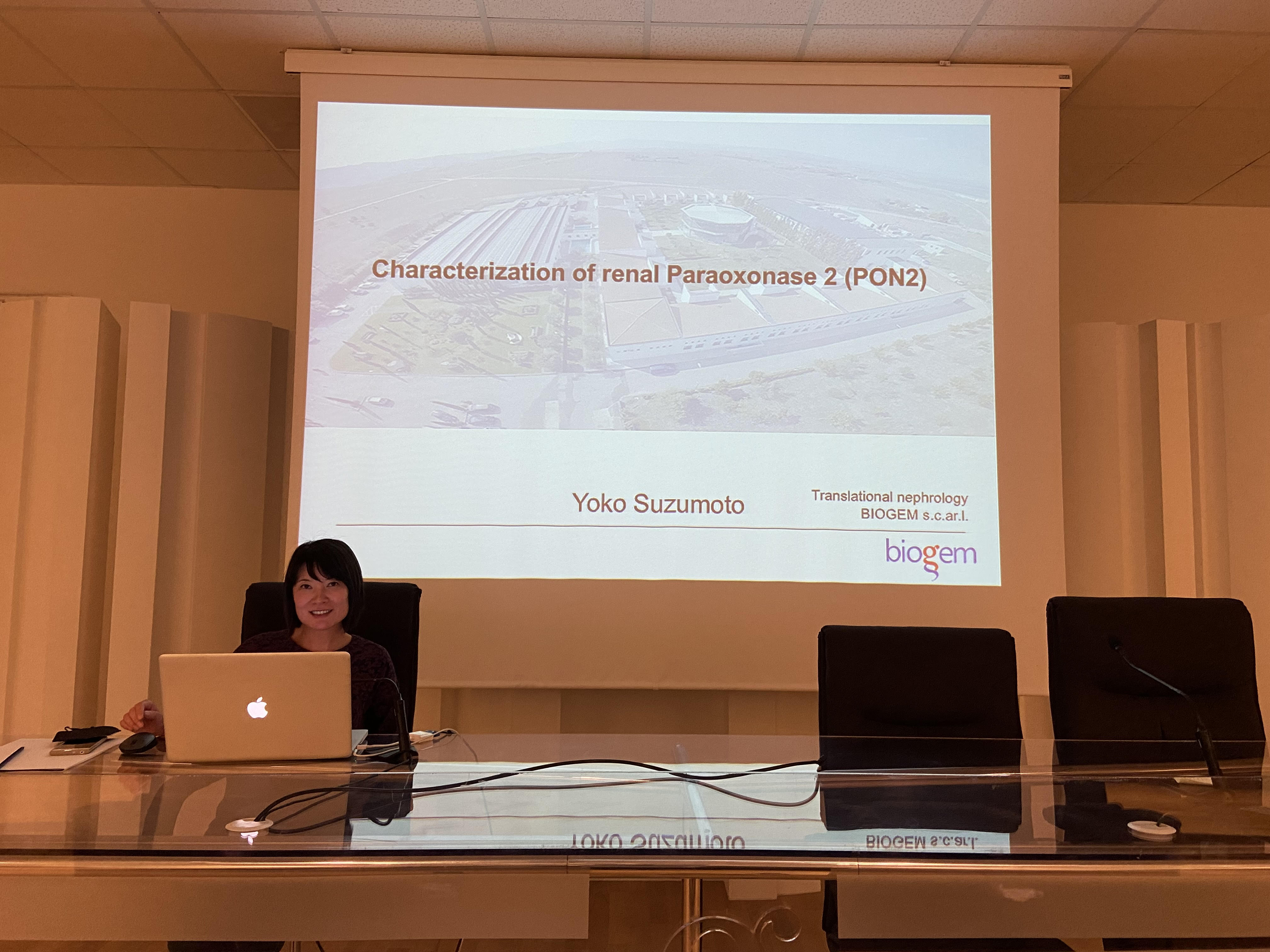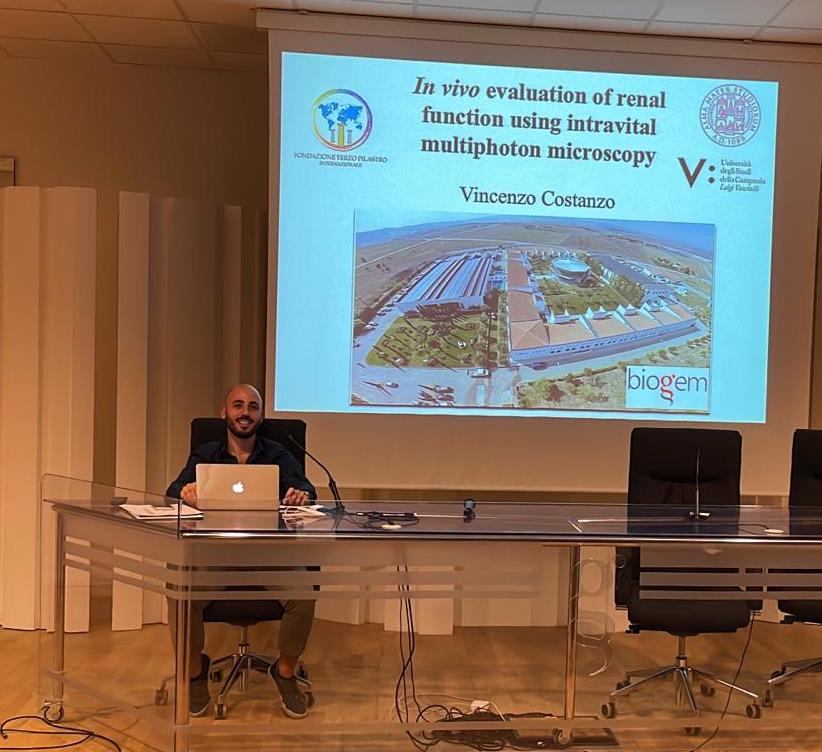Translational Nephrology
Director: prof. Francesco Trepiccione and dr. Anna Iervolino
Research areas
Our Translational Nephrology laboratory aims at deepening the knowledge of renal pathophysiology, in order to subsequently develop new therapeutic targets. The current research interests of our laboratory are directed to the study of arterial hypertension, diabetes mellitus, diabetes insipidus, polyuric syndromes, renal drug toxicity, renal cystic diseases and models of acute renal failure, as well as rare kidney pathologies. Our Translational Nephrology laboratory works on both genetically modified animal models, in which renal pathology or its alterations are reproduced, and mouse models, in which the pathological state is induced with nephrotoxic substances. These animal models are a valid tool for reproducing and studying renal pathologies, thus allowing for the development of molecules with a pharmaceutical action that might be used in humans, too.
Technologies used / developed
In order to achieve the aforementioned objectives, in vivo and in vitro studies are used.
Basic metabolic parameters: mice or rats are placed individually in metabolic cages that allow, after three days of adaptation, to monitor the consumption of water and food, the measurement of electrolytes (Na, Cl, Ca, K, Mg) and proteinuria, after sampling urine and hematocrit, and of blood metabolites (pH, pO2, pCO2, HCO3), after arterial or venous blood sampling.
Histological evaluation of renal morphology: mouse or rat kidneys are collected following renal perfusion with paraformaldehyde, via the abdominal aorta. They are then embedded in paraffin and cut into thin sections for the morphological evaluation of the organ or the expression of some proteins, through immunohistochemical assays.
Macroscopic and microscopic dissection of the kidney districts: once collected, the kidneys are decapsulated and dissected, in order to obtain a portion of the cortex, one of the external medulla and one of the internal medulla. The different segments of the nephron (glomerulus, proximal tubule, Henle’s loop, distal tubule and collecting duct) can be isolated by digesting the renal portion of interest with a solution containing collagenase and proteinase. The renal tubules, thus isolated, allow for an efficient extraction of RNA and proteins.
Renal micro-puncture: it is a highly specialized method that allows the evaluation of renal flow directly in the individual portions of the nephron. Thanks to the use of micropipettes, a perfusion liquid is injected upstream of the tubule of interest. This liquid is then collected downstream of the renal segment and analyzed. In this way, information is obtained on the renal flow of the tubule studied, on the extent of absorption and secretion, as well as on the mechanisms induced by any injected drugs.
Two-photon microscopy: this is the technique of choice for physiopathology studies in organs of living animals, at the cellular and sub-cellular level. It allows for real-time simultaneous acquisition of various physiological parameters. In nephrology, two-photon microscopy helps deepening the knowledge of many diseases, including acute renal failure, hypertension, or diabetes mellitus, thanks to the possibility of using fluorescent probes that allow continuous measurements in real time. After the externalization of the kidney, the animal is placed under the two-photon microscope and the kidney compartments of interest are marked through venous access, with specific fluorescent probes. The analysis of cellular events, recorded under normal or pathological conditions, can be carried out using IT approaches.
Main results achieved
Cystogenesis in a cKO mouse model for Dicer in the whole kidney
The inactivation of Dicer in the cKO mouse model (Dicerflox / flox; Pax8Cre / +) causes an altered biogenesis of miRNAs in the kidney and thyroid, resulting in the formation of numerous cysts and interstitial fibrosis in the cKO kidneys after two months. From a functional point of view, cKOs show a marked defect in urine concentration and proteinuria. The formation of the cysts is related to a gradual disappearance of the primary cilium and is associated with an alteration of the GSK3β / β-catenin pathway.
β1 integrin is essential for the urine concentration process. To study β1 integrin, a receptor that mediates the interaction between cell and extracellular matrix, a cKO mouse model (Itgb1flox / flox; Pax8 Cre / +) was generated in which the protein is deleted throughout the nephron. The kidneys of cKO mice show marked hydronephrosis and dilation of the distal tubules, the Henle’s loop and the collecting ducts. In these animals we also identified a reduction in the expression of the AQP2 channel, which resulted in a strong defect in urine concentration.
miRNA: therapeutic targets for aquaresis. To investigate the role of miRNAs in collecting ducts, a cKO mouse model was generated in which there is a specific Dicer deletion in the main cells (Dicerflox / flox; AQP2 + / Cre). In this portion of the nephron, the AQP2 water channel mediates the process of urine concentration, to the point that the absence or mutations of this protein cause diabetes insipidus. We found marked polyuria in cKO mice of approximately two months, development of hydronephrosis and premature death within three months. The definition of new molecular targets in this process is underway.
Cellular plasticity of the collecting duct as a self-repair mechanism. Primary (PC) and intercalated (IC) cells constitute the two cell types of the collecting duct, and originate from unknown stem precursors. Intercalated cells can change their structure from acid to secretory base, showing extreme plasticity. From the literature it appears that the main cells can instead mutate into intercalated cells. We have previously shown that lithium induces the appearance of cell types having intermediate characteristics between PC and IC. We generated mice selectively expressing YFP in PCs to follow their morphological and functional changes during lithium treatment. The possible expression of markers of the ICs in the labeled YFP cells would prove the possible conversion of the PC to IC.
New molecular hypertension targets in a salt sensitive hypertension model (NA rats). Alpha adducin polymorphisms are linked to the development of arterial hypertension in humans. We are determining the pathogenetic mechanism that determines the development of arterial hypertension in rats carrying an alpha adducin mutation. A molecular interaction between alpha adducin and the thiazide sensitive Na / Cl transporter (NCC) is known from preliminary experiments. This interaction modifies the state of phosphorylation and activation of NCC.
Application of molecular methods in the diagnostics of rare genetic diseases. We are studying several rare genetic diseases, including Fanconi Bickel syndrome, Gitelman syndrome and β-thalassemia. In particular, we use an innovative molecular approach for the validation of possible prognostic markers on urine samples from affected patients.
Research
Internal seminar


